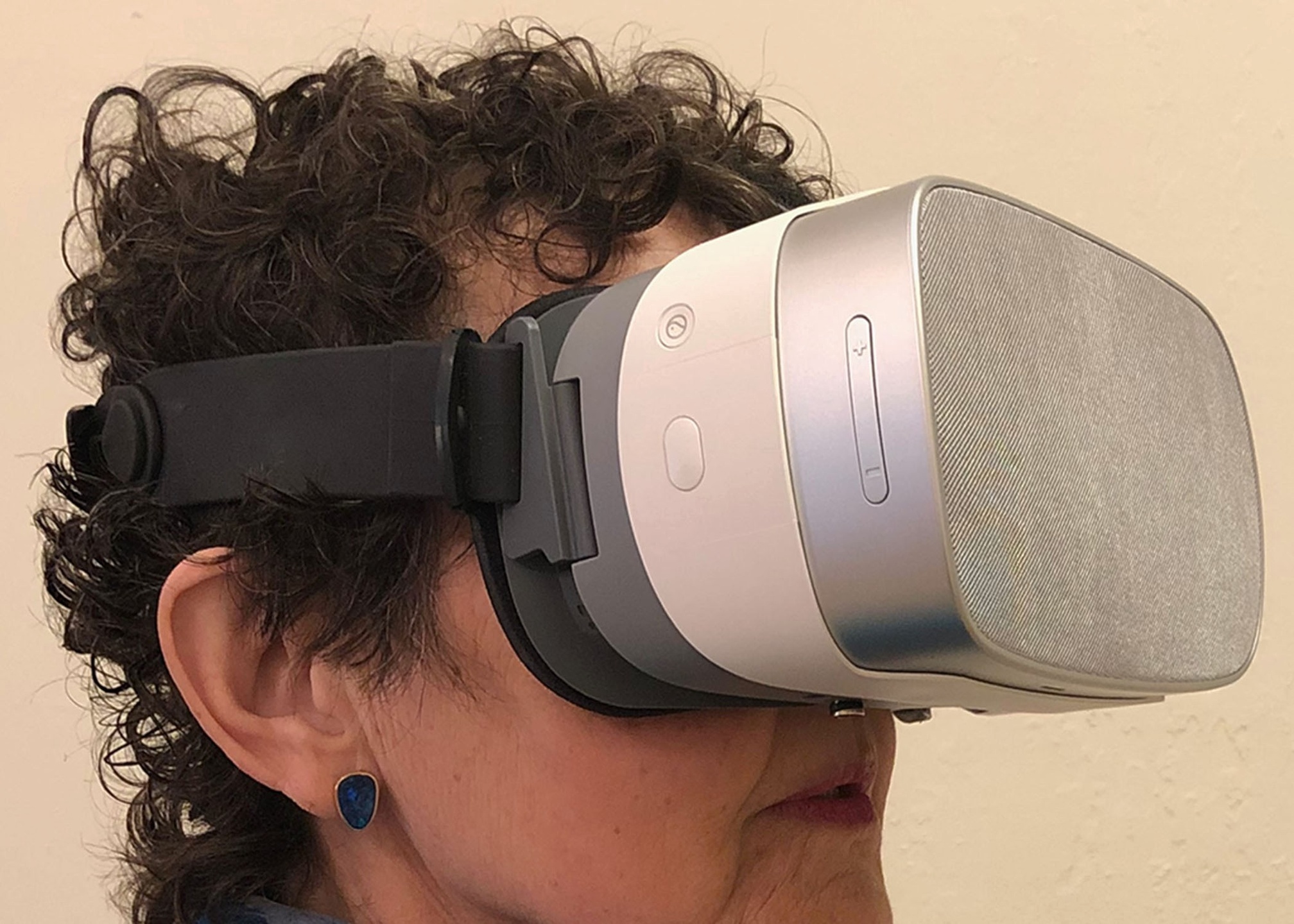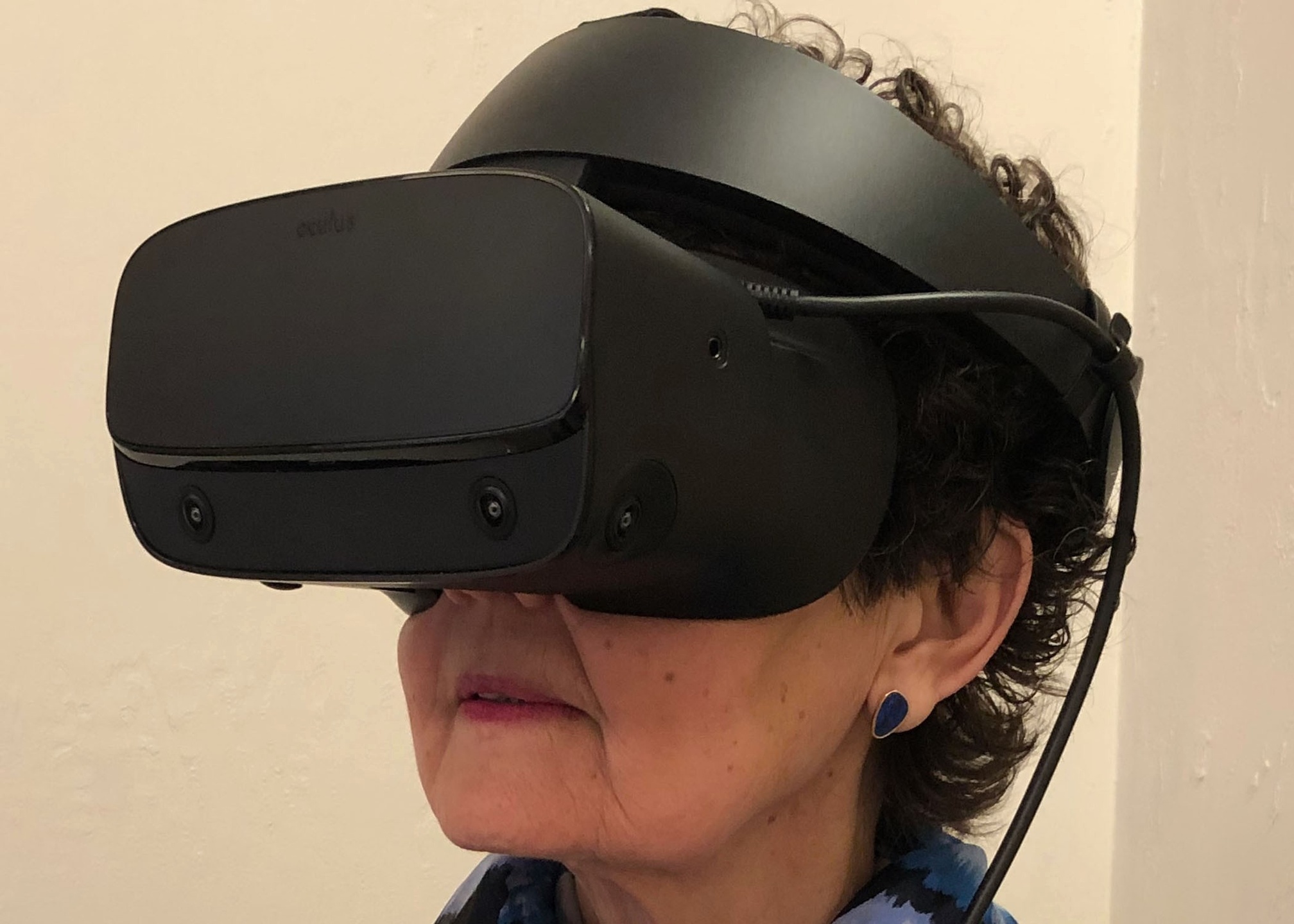VR Headsets Buyer's Guide
Most therapists will need at least one VR headset for client use during in-office VR therapy sessions. During teletherapy sessions, the client will use their own VR headset. However, the therapist should have a compatible headset so they can check virtual environments and test consumer apps before using them with clients.
Some VR therapy products include a VR headset as part of a product package. Therapists who are starting with VR should select a VR therapy product first (see the VR Therapy Product Buyer's Guide). If your selected product does not include a VR headset, you can then shop for a compatible VR headset based on the specifications provided by the VR therapy product vendor.
A VR headset sold as part of a VR therapy product package may be 'locked in' or restricted in several ways. Check with the therapy product vendor before purchasing additional or replacement VR headsets for use with this product.
VR Headset Types
A VR headset (also called a head-mounted display or HMD) tracks the user's head position and adjusts the display images based on the user location and point of view within a virtual environment.
For VR therapy applications, the therapist controls and monitors the client's virtual environment from their computer or tablet (see the VR Therapist Workstation Buyer's Guide). The therapist can monitor what the client is seeing using a 2-D window into the client's VE. Therapist controls provide the ability to start, pause, or stop the VE, move the client within the environment, or modify aspects of the client experience.
There are several types of VR headsets:
-
Standalone headsets containing basic hardware and software for displaying VR content and communicating via Wi-Fi. Audio may be provided by the headset or separate headphones.
-
Smartphone headsets or holders enclose a compatible smartphone and use the phone's display, sensors, Wi-Fi support, and speakers. Holders range from crude and inexpensive (literally cardboard) to more advanced and comfortable; display quality depends upon both the smartphone and the lenses in the holder.
-
Tethered headsets provide the most advanced features by connecting to a specialized gaming computer or a gaming console (although there are no VR therapy apps for gaming consoles). These headsets may also support spatial audio, eye tracking, handheld controllers, etc.
Note: Oculus Quest 2 headsets are a special case because they can be used as either a standalone headset or a tethered headset. When used standalone, the Quest 2 is compatible with earlier Quest headset models. When tethered to a computer, the Quest 2 is software compatible with the Oculus Rift-S headset.
Figure: Example Standalone VR Headset (Pico)

Figure: Example Smartphone VR Headset (Google)

Figure: Example Tethered VR Headset (Oculus)

Standalone VR headsets are the easiest to setup because they have the fewest components. Smartphone headsets are next and tethered headsets are the most complex.
A smartphone headset that is compatible with an existing smartphone is often the least expensive option. Purchasing a smartphone specifically for VR, along with a compatible holder, may be more or less expensive than a standalone VR headset. If a smartphone is only going to be used for VR, it does not require a SIM card or cellular telephone service. VR can exhaust smartphone batteries more quickly than other phone uses or cause overheating.
A tethered headset paired with a specialized computer provides the most advanced user experience and is the most expensive option. VR therapy products only work with certain PC-based tethered headsets. PlayStation VR or other gaming console-based headsets are not currently supported by any VR therapy products.
Headsets that track the user's head movements with either 3 degrees of freedom (3-DoF) or 6 degrees of freedom (6-DoF) can be used for VR therapy. Users move around within a virtual environment differently depending on the headset, which can be important for certain virtual environments:
-
3-DoF means that the headset tracks the user’s head orientation, but not changes in user's physical location. The client remains in one place physically and can utilize other controls to move around within their virtual environment, such as clicking on a different location to teleport.
-
6-DoF means the headset tracks both the user's head movements and their physical body position. The client can change their location within the virtual environment by walking or running (within the limits of their physical space) and their position is updated automatically.
Allowing a client to move around physically while in VR increases their feeling presence and immersion. Movement also introduces the risk of a client hitting something or falling because the client cannot not see their actual surroundings. Software for 6-DoF headsets may include safety features to limit user's physical movements to the available space. For example, enabling the user to mark the limits of their physical environment and create a virtual boundary that appears within their virtual environment.
Some headsets also track the user's gaze or eye movements which allows the user to select virtual objects or menu items by looking at them. Gaze tracking also lets the therapist monitor exactly where a client is directing their attention via the therapist workstation.
Some VR systems also track user body parts via cameras or handheld controllers. This enables functions like using hand movements for gesture controls and interacting with objects in the virtual environment.
Where to Buy
Some VR software companies package a VR headset—and optionally other equipment such as biofeedback devices, peripheral devices, or a therapist workstation—together with their VR therapy products. Other companies give you the option of purchasing a compatible VR headset from them or using your own headset. If your VR therapy software does not include a VR headset, ask the vendor for a list of compatible headsets, including the specific headset models.
Check the VR headset manufacturer's website for information on where to buy VR headsets or try an Internet search for the product name. Consumer VR headsets are primarily sold online and through big box retailers. Some computer and gaming stores carry VR gear, primarily for gamers. They may offer demos that allow you to try a headset using a consumer VR app. A few VR headset makers focus on business markets rather than consumer sales. These headset brands may only be available as part of a VR therapy product bundle, via vendors who sell primarily to businesses, or from the manufacturer.
VR headsets compatible with Android and iPhone, also known as smartphone holders, are available from Amazon, Walmart, and other retailers. Brands include BNEXT and MERGE. Google Cardboard VR headsets are even less expensive but can give a poorer visual experience, see arvr.google.com/cardboard/get-cardboard/.
VR Headset Questions
Software compatibility is the first concern when shopping for a VR headset to be used in therapy. For headsets to be used with a specific VR therapy app, ask the vendor for a list of compatible headsets.
For headsets to be used with a specific VR consumer app, check the app vendor's website to see which app stores offer the product. Many consumer apps are available from more than one app store and support multiple types of headsets.
This list shows which VR headset brands are compatible with each app store:
-
Apple App Store Smartphone based w/Apple iPhone
-
Google Play Store: HTC Vive, Smartphone-based w/Android phone
-
Oculus Experiences: Oculus
-
Vive Port: HTC Vive, Oculus, Pico
Here are some questions to consider when evaluating VR headsets:
-
Software compatibility: which VR therapy products or consumer VR apps are compatible with each headset?
-
Tethered headset requirements: what are the supporting computer requirements? For example, some tethered headsets require a gaming computer equipped with a specific graphics card and other options.
-
Degrees of freedom: does the headset support 3 or 6 degrees of freedom? With a headset that supports 6 degrees of freedom users can move around physically within their virtual environment, which may be important for some uses.
-
Video specifications: resolution and refresh rate? In general, more pixels and faster refresh provide a better user experience.
-
Optional devices: are handheld controllers or other peripheral devices required or recommended? Are they included with the headset or sold as separate items?
-
Glasses: will the headset fit over most glasses? Can the focus be adjusted for different users?

